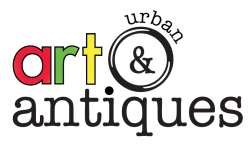Bad economic news seems to come almost everyday. The cover of the new The Magazine Antiques excites the reader with “American Antiques Season”, but business is slow if not zero, as reported by Bloomberg in its coverage of the Winter Antique Show of the last weekend.
The Winter Antiques Show is usually regarded as a barometer of the antique market for the year. The other show at Armory of Lexington and 26 St. appeared to be at most lukewarm. Under current financial crisis, to spend some 5 digits in this kind of antiques show need not only just a thick wallet, but also some impulse that cannot be explained rationally.
But impulsive purchases are rare now. Not only New Yorkers in particular look sultry these days, the mood brought by the money shortage has crept into every aspect of the society including universities. Brandies University, facing a huge budget deficit, decided recently to close its Rose Art Museum and sell off the collections. Later, it was amended to provide that only some that can hold the values well in the current art market will be sold.
Unlike the majority opinion that appeared online or in the newspaper, I do not hold strong opinions against deaccessioning, in particular with regard to reconfiguring infrastructure of an ailing school. To what extent the Rose Art Museum helps building the curriculum of art program and the knowledge base of the students at Brandies has not been elaborated on. In other words, how the museum fits into the mission and role of the university should be measured to make a fair judgement. True, students and alumni hold pride of their national-level contemporary collection; but if the collection has always been a HIDDEN jewel not only to the outside public but also to scholars and students within the campus, then such a pride is not deeply rooted and should not be taken as excuse against deaccession of artworks.
A university is a knowledge tank where the future generation shapes their minds and views. Selling artworks to fund other educational programs is not only justifiable, but also necessary for a private school whose funding comes mostly from donations, now dwindling. Would alumni and students be happy if the school cut faculty, classes and programs to save the museum? I doubt.
Because the majority of the artworks were donated, there are both legal and ethnic binding under the deaccession decision. No donor wants to see their donation being sold, but without legal agreements, the school has the sole right to mange and dispose its own procession. American automobile companies have failed to rescue themselves because they have been arguing with “too big to change” or “too late to change”. Universities have been largely following the pattern of those big three automobiles companies in the way that they have built small society of their own and invest diversely. If so, the idea of selling a mature investment needn’t be burdened with sentiment.
On the other hand, the news should have hit harder when University of Pennsylvania’s Museum of Archaeology and Anthropology declared to layoff 18 research specialists in the coming May. Maybe layoffs are not news anymore compared to deaccessioning collections. In both cases, ” low foot traffic” has been used as evidence of cutting back. In my opinion, the museum should not be just a place of entertainment or education, but also an assembling of expertise who function as authority in their own fields. Looking at the way to profit-making in non-profit museums endangers the integrity of such institutions.
The Museum of Archaeology and Anthropology has been always leading research institute with long history of expeditions and wide publication. To apply funding in the already under-funded archaeology field will not be easy. Thus supporting the museum scholars means budget deficits. These research scholars are mostly not tenure faculty so that layoffs would not be difficult. Their works maybe in narrow fields, maybe not suitable to the general pubic education, but they deepen our understanding, not just of archaeology and anthropology, but also of human beings, of ourselves.
“But if we don’t show those things, and we don’t interpret them and we don’t use them to educate people, what are they surrounded by? Plastic and bad design and things that have no aesthetic quality at all.” ——Miron True


Sorry I was not home when you wrote the nice article about Woodbury, CT. Enjoy your site and please let me know if I can ever be of service. Yours truly, Wayne Mattox 203-263-2899
LikeLike